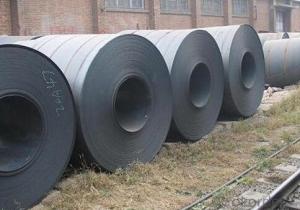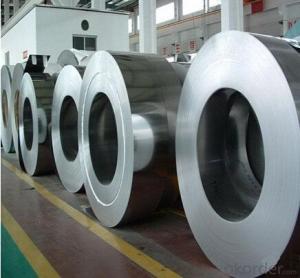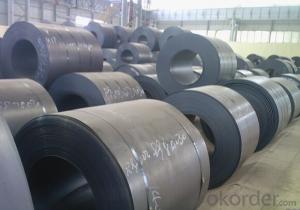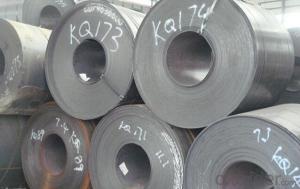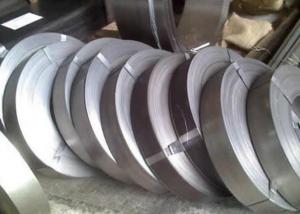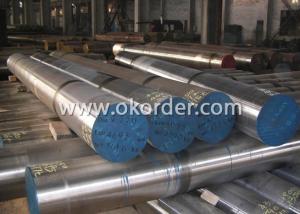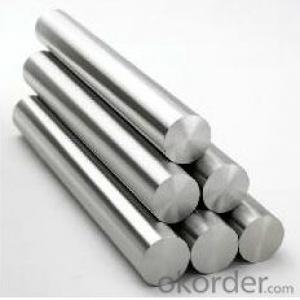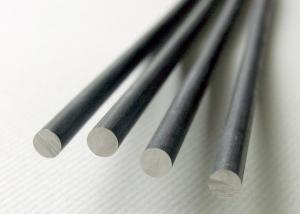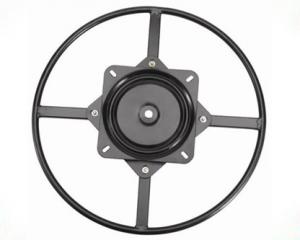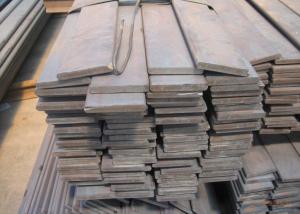EG_GA_GI_PPGI_GL_HR_CR Steel Coils_Sheets
- Loading Port:
- Tianjin
- Payment Terms:
- TT OR LC
- Min Order Qty:
- 25 m.t.
- Supply Capability:
- 10000 m.t./month
OKorder Service Pledge
OKorder Financial Service
You Might Also Like
Item specifice
EG_GA_GI_PPGI_GL_HR_CR Steel Coils_Sheets
Quick Details
Name | Hot Rolled Steel Coil |
Standard | GB/ASTM/SAE/AISI/DIN/JIS/EN/BS |
Surface Treatment: | Black/Peeling/Polished/Machined |
Delivery Condition: | Hot Rolled or Forged/Peeled or Black Surface |
Test | SGS/UT 100% Elements Testing |
Certificate: | ISO/Mill Certificate |
Service: | 24 hours online service / |
more than 20 years trading and manufacture | |
Quality Assurance: | the third party inspection, such as SGS, BV, TUV…etc. is acceptable |
Packaging Details: | Seaworthy Packaging or as per customer's packing instruction |
Specification
| Thickness | 0.15mm-2.0mm |
| Thickness tolerance | +/- 0.02mm |
| Width | 600mm-1250mm |
| Width tolerance | +/-2mm |
| Zinc coating | Z40-Z275 g/m2 |
| Color | Grey white, sea blue, red or any RAL standard |
| Painting | Top: 20+/-5um Back: 5mic---8mic |
| Standard | ASTM, AISI, DIN, GB,JIS |
| Material | SGCC,SGCD,SECC,SECD,DX51D+Z, S350GD, S450GD, S550GD |
| Technique | Cold rolled, hot-dipped galvanizing, color coated, galvanized and so on |
| Spangle | Zero spangle, regular spangle or normal spangle |
| Surface Structure | Galvanized, zero spangle, regular spangle or normal spangle |
| Surface treatment | Chromate and oiled, chromate and non-oiled |
| Packing | Export standard, or according to customer's requirement |
| Min order | 25Tons |
| Coil weight | 3-6tons or as client requirement |
| Coil ID | 508/610mm |
Company Information
CNBM International Corporation is the most import and export platform of CNBM group(China National Building Material Group Corporation) ,which is a state-owned enterprise, ranked in 270th of Fortune Global 500 in 2015.
With its advantages, CNBM International are mainly concentrate on Cement, Glass, Iron and Steel, Ceramics industries and devotes herself for supplying high quality series of refractories as well as technical consultancies and logistics solution.
After-sale service | l CNBM provides the services and support you need for every step of our cooperation. We’re the business partners you can trust; you can relax and get on with doing business. |
l For any problem, please kindly contact us at any your convenient time, we’ll reply you in our first priority within 24 hours | |
Advantages | Industry experience over 20 years. |
Shipment of goods -More than 70 countries worldwide. | |
The most convenient transport and prompt delivery. | |
Competitive price with best service. | |
High technical production line with top quality products. | |
High reputation based on best quality products. |
Product Show
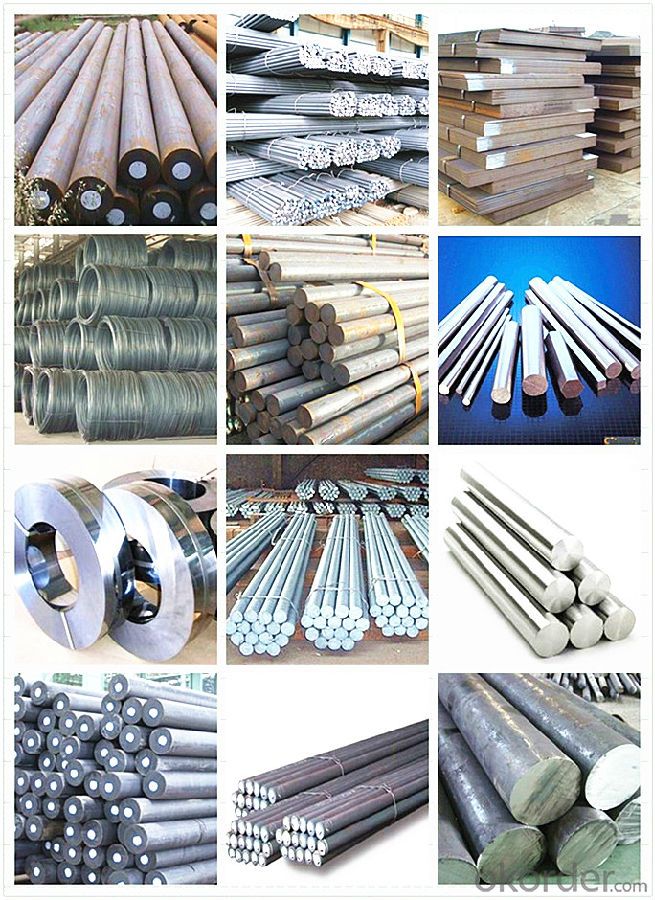
FAQ
Are you a trading company or manufacturer? | Manufacturer |
What’s the MOQ? | 3 metric ton |
What’s your delivery time? | 15-35 days after downpayment received |
Do you Accept OEM service? | Yes |
what’s your delivery terms? | FOB/CFR/CIF |
What's the Payment Terms? | 30% as deposit,70% before shipment by T/T |
Western Union acceptable for small amount. | |
L/C acceptable for large amount. | |
Scrow ,Paybal,Alipay are also ok | |
Why choose us? | Chose happens because of quality, then price, We can give you both. |
Additionally, we can also offer professional products inquiry, products knowledge train (for agents), smooth goods delivery, excellent customer solution proposals. | |
What's your available port of Shipment? | Main Port, China |
What’s your featured services? | Our service formula: good quality+ good price+ good service=customer's trust |
Where are your Market? | Covering more than 160 countries in the world |
- Q:What are the different surface protection methods for special steel?
- There are several surface protection methods for special steel, including galvanization, coating with protective paints or varnishes, electroplating, and applying corrosion-resistant alloys or metals. These methods help prevent rust, corrosion, and other forms of damage, ensuring the longevity and durability of the special steel.
- Q:What are the requirements for special steel used in textile machinery?
- The requirements for special steel used in textile machinery include high strength and durability, excellent corrosion resistance, good wear resistance, and the ability to withstand high temperatures and pressures. Additionally, the steel should have good machinability and be able to maintain dimensional stability under various operating conditions.
- Q:How is special steel recycled or disposed of?
- Special steel, also known as alloy steel, is a valuable and highly sought-after material due to its unique properties and applications. When it comes to recycling or disposing of special steel, several methods can be employed depending on the condition and quality of the material. Recycling is the preferred and most common method for dealing with special steel. The recycling process involves collecting, sorting, and melting down the steel scrap to be reused in the production of new steel products. This process helps conserve natural resources, reduce energy consumption, and minimize waste generation. The first step in recycling special steel is the collection of scrap or end-of-life products that contain this material. These sources can include discarded machinery, automotive parts, construction materials, and even old appliances. Once collected, the steel is sorted and separated from other materials, such as plastic, rubber, or non-ferrous metals, using various techniques like magnetic separation, eddy current separation, or manual sorting. After sorting, the steel scrap is sent to a specialized recycling facility, commonly known as a steel mill or foundry. Here, the scrap is melted down in large furnaces at extremely high temperatures. During this process, impurities and contaminants are removed, and alloying elements can be added to achieve the desired composition and properties of the steel. Once the steel has been melted and purified, it is cast into various forms such as ingots, billets, or slabs, which can then be used to manufacture new steel products. These products may include pipes, bars, plates, or even new machine parts, depending on the specific requirements of the industry. As for disposal, special steel should be considered a valuable resource and not simply thrown away as waste. However, in cases where the steel is damaged beyond repair or contains hazardous materials, proper disposal methods must be followed. This typically involves consulting with specialized waste management companies that can handle the safe and environmentally friendly disposal of such materials. In conclusion, special steel is primarily recycled due to its high value and the various benefits associated with recycling. Through the collection, sorting, and melting processes, special steel can be transformed into new products while conserving resources and minimizing waste. Proper disposal methods are only necessary in exceptional cases where recycling is not feasible or when dealing with damaged or hazardous materials.
- Q:How does special steel contribute to the mining aftermarket industry?
- Special steel plays a crucial role in the mining aftermarket industry by offering enhanced durability, strength, and resistance to extreme conditions. This type of steel is specifically designed to withstand the demanding environments and heavy loads associated with mining operations. In the mining aftermarket industry, special steel is used to manufacture various equipment and components, such as drill bits, cutting tools, crusher parts, and wear plates. These components are subject to intense wear and tear due to the abrasive nature of the materials being mined. Special steel, with its superior hardness and toughness, ensures that these components can withstand the harsh conditions and maintain their performance over an extended period. Furthermore, special steel allows for the development of more efficient and productive mining equipment. By using high-strength steel alloys, manufacturers can design lighter equipment without compromising on strength and durability. This results in increased productivity and reduced operating costs for mining companies. Special steel also contributes to the safety of mining operations. The robustness and reliability of steel components minimize the risk of unexpected failures, which can lead to accidents and downtime. Additionally, special steel can withstand extreme temperatures, corrosion, and other environmental factors commonly encountered in mining, reducing the need for frequent replacements and repairs. In summary, special steel is essential to the mining aftermarket industry as it provides the necessary strength, durability, and resistance to extreme conditions required for mining equipment and components. It enhances productivity, reduces operating costs, and ensures the safety of mining operations, making it a critical material in the mining industry.
- Q:Can special steel be used in high-speed applications?
- Yes, special steel can definitely be used in high-speed applications. Special steel refers to a range of steel alloys that have been specifically developed and engineered to possess enhanced properties such as high strength, durability, and resistance to wear and corrosion. These properties make special steel suitable for various demanding applications, including high-speed ones. In high-speed applications, such as aerospace, automotive, machining, and power generation, the material needs to withstand extreme conditions, including high temperatures, vibrations, and mechanical stress. Special steel is designed to meet these requirements and provide excellent performance even under such challenging conditions. For example, high-speed steel (HSS) is a type of special steel that is specifically formulated to retain its hardness and strength at elevated temperatures, making it ideal for cutting tools like drills, end mills, and saw blades. Similarly, stainless steel variants like martensitic and precipitation-hardening stainless steels are commonly used in high-speed applications due to their high strength, toughness, and resistance to corrosion. Moreover, the development of advanced manufacturing techniques, such as powder metallurgy, has allowed the production of special steel with even better properties, including higher hardness, improved wear resistance, and superior dimensional stability. These advancements have further expanded the application range of special steel in high-speed industries. In summary, special steel is a versatile and reliable material that can be successfully employed in high-speed applications. Its unique properties make it suitable for withstanding the demanding conditions and providing excellent performance, making it a preferred choice for industries requiring materials that can withstand high speeds, temperatures, and mechanical stress.
- Q:How is high-temperature steel used in the production of furnace components?
- High-temperature steel is used in the production of furnace components due to its exceptional heat resistance and strength. It can withstand the extreme temperatures inside the furnace without losing its structural integrity, making it ideal for constructing furnace walls, tubes, and other critical components. Additionally, high-temperature steel helps maintain a stable and efficient heating environment, ensuring optimal performance and longevity of the furnace.
- Q:What are the different types of mold steel?
- There are several types of mold steel used in various industries, such as tool steel, stainless steel, and carbon steel. Tool steel is commonly used for high-volume production molds due to its excellent hardness, wear resistance, and toughness. Stainless steel is preferred for molds that require corrosion resistance and can withstand high temperatures. Carbon steel, on the other hand, is often used for less demanding applications where cost-effectiveness is a priority.
- Q:How does special steel contribute to the manufacturing of defense equipment?
- Special steel plays a crucial role in the manufacturing of defense equipment due to its unique properties and characteristics. Firstly, special steel is known for its exceptional strength and durability, making it ideal for constructing various components of defense equipment. This high strength allows for the production of lightweight yet robust structures, enabling the development of advanced weaponry and protective gear. Moreover, special steel possesses excellent resistance to corrosion and wear, making it resistant to the harsh conditions faced by defense equipment in various environments. This resistance to corrosion ensures that the equipment remains functional and reliable even in extreme conditions, such as exposure to saltwater or acidic environments. Additionally, special steel offers exceptional heat resistance, which is crucial for defense equipment such as missile casings or jet engine components. Its ability to withstand high temperatures without losing its integrity or mechanical properties allows for the creation of more efficient and powerful defense systems. Furthermore, special steel can be tailored to meet specific requirements, enabling the manufacturing of customized defense equipment. It can be alloyed with various elements to enhance specific characteristics, such as increased hardness, improved magnetic properties, or better resistance to impact. This versatility allows for the production of defense equipment that meets the exact needs of military applications, enhancing their overall performance. In summary, special steel contributes significantly to the manufacturing of defense equipment by providing exceptional strength, resistance to corrosion and wear, heat resistance, and customization options. These properties enable the creation of more advanced, reliable, and efficient defense systems that meet the demanding requirements of modern military operations.
- Q:What are the different non-destructive testing techniques used for special steel?
- There are several non-destructive testing (NDT) techniques that are commonly used for special steel to ensure its quality and integrity without causing any damage. These techniques are essential in industries where special steel is used, such as aerospace, automotive, and construction, to ensure that the material meets the required specifications and standards. Some of the commonly used NDT techniques for special steel are: 1. Ultrasonic Testing (UT): This technique involves the use of high-frequency sound waves to detect internal flaws, such as cracks, voids, or inclusions, in special steel. UT is highly effective in detecting subsurface defects and is widely used due to its versatility and accuracy. 2. Magnetic Particle Testing (MT): MT is a technique that uses magnetic fields and iron particles to detect surface or near-surface defects in special steel. It is particularly useful in identifying defects like cracks, seams, or laps, as the magnetic particles will accumulate at these locations, making them visible under proper lighting conditions. 3. Liquid Penetrant Testing (PT): PT is a widely-used method for detecting surface defects in special steel. It involves applying a liquid penetrant to the surface of the material, which seeps into any surface cracks or defects. After a specified time, the excess penetrant is removed, and a developer is applied to make the defects visible. 4. Eddy Current Testing (ET): ET utilizes electromagnetic induction to detect surface or near-surface defects in special steel. It is particularly useful in detecting cracks, corrosion, or metal loss in conductive materials. ET is a fast and accurate method, making it suitable for high-speed production environments. 5. Radiographic Testing (RT): RT involves the use of X-rays or gamma rays to examine the internal structure of special steel. It can detect various defects, including porosity, inclusions, and cracks. RT provides detailed images that help identify the location, size, and severity of defects. 6. Visual Testing (VT): VT is a simple yet crucial technique that involves a visual examination of the surface of special steel. It helps identify surface defects like scratches, dents, or corrosion. Although VT is not as sensitive as other NDT techniques, it is often used as a preliminary inspection method. Each of these non-destructive testing techniques has its own advantages and limitations. The selection of the appropriate technique depends on factors such as the type and size of the special steel, the required inspection depth, and the specific defects that need to be detected. By using a combination of these techniques, manufacturers and inspectors can ensure the quality and reliability of special steel products.
- Q:How does special steel contribute to improving product reliability in critical applications?
- Special steel contributes to improving product reliability in critical applications by providing enhanced strength, durability, and resistance to corrosion and wear. This high-performance material ensures that critical components can withstand extreme conditions, such as high temperatures or heavy loads, without compromising performance or safety. Additionally, special steel's precise composition and manufacturing techniques allow for tight tolerances and consistent quality, minimizing the risk of failure or malfunction. Ultimately, its use in critical applications enhances product reliability, ensuring the smooth operation and longevity of essential equipment and systems.
1. Manufacturer Overview |
|
|---|---|
| Location | |
| Year Established | |
| Annual Output Value | |
| Main Markets | |
| Company Certifications | |
2. Manufacturer Certificates |
|
|---|---|
| a) Certification Name | |
| Range | |
| Reference | |
| Validity Period | |
3. Manufacturer Capability |
|
|---|---|
| a)Trade Capacity | |
| Nearest Port | |
| Export Percentage | |
| No.of Employees in Trade Department | |
| Language Spoken: | |
| b)Factory Information | |
| Factory Size: | |
| No. of Production Lines | |
| Contract Manufacturing | |
| Product Price Range | |
Send your message to us
EG_GA_GI_PPGI_GL_HR_CR Steel Coils_Sheets
- Loading Port:
- Tianjin
- Payment Terms:
- TT OR LC
- Min Order Qty:
- 25 m.t.
- Supply Capability:
- 10000 m.t./month
OKorder Service Pledge
OKorder Financial Service
Similar products
New products
Hot products
Related keywords


